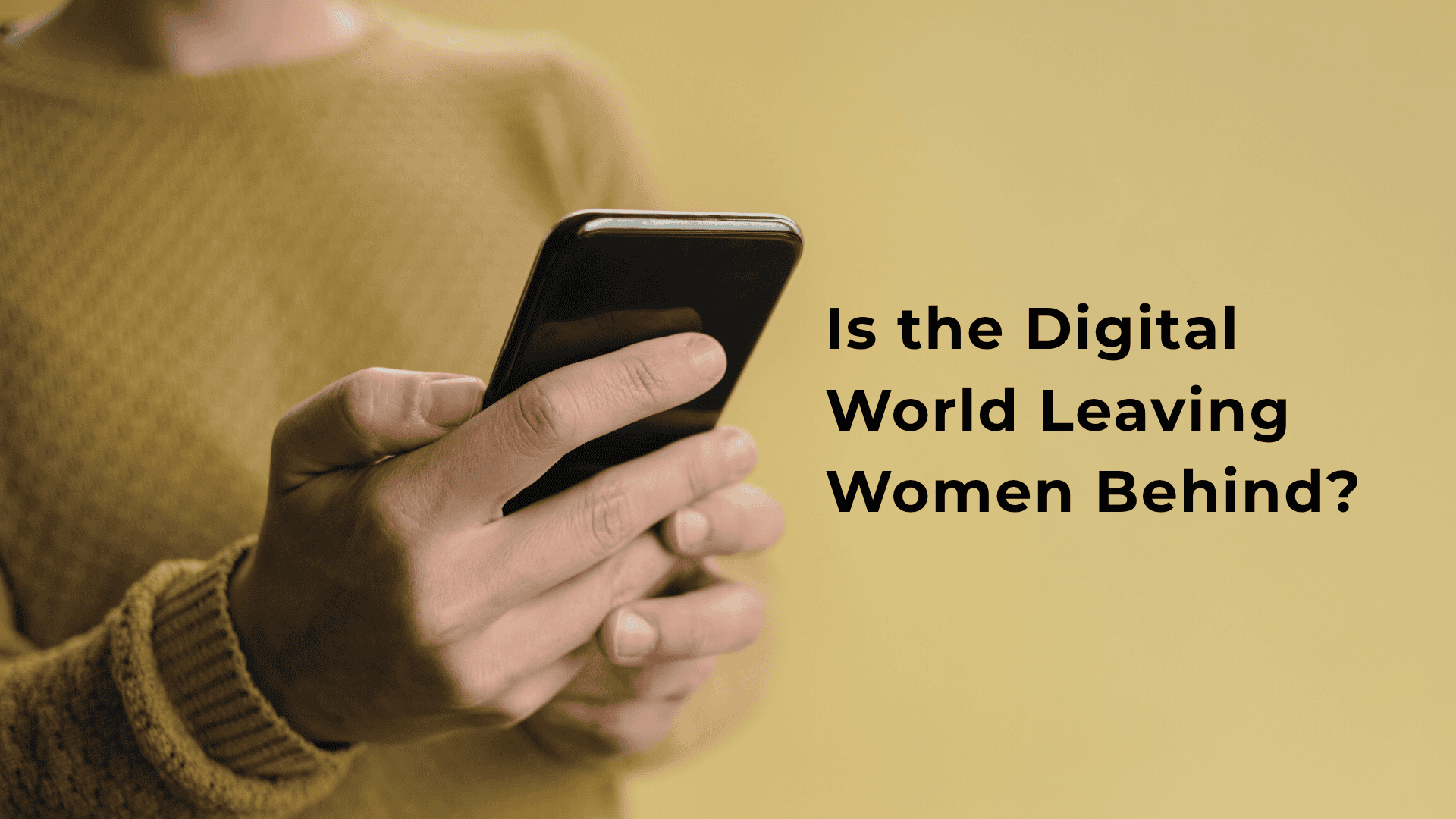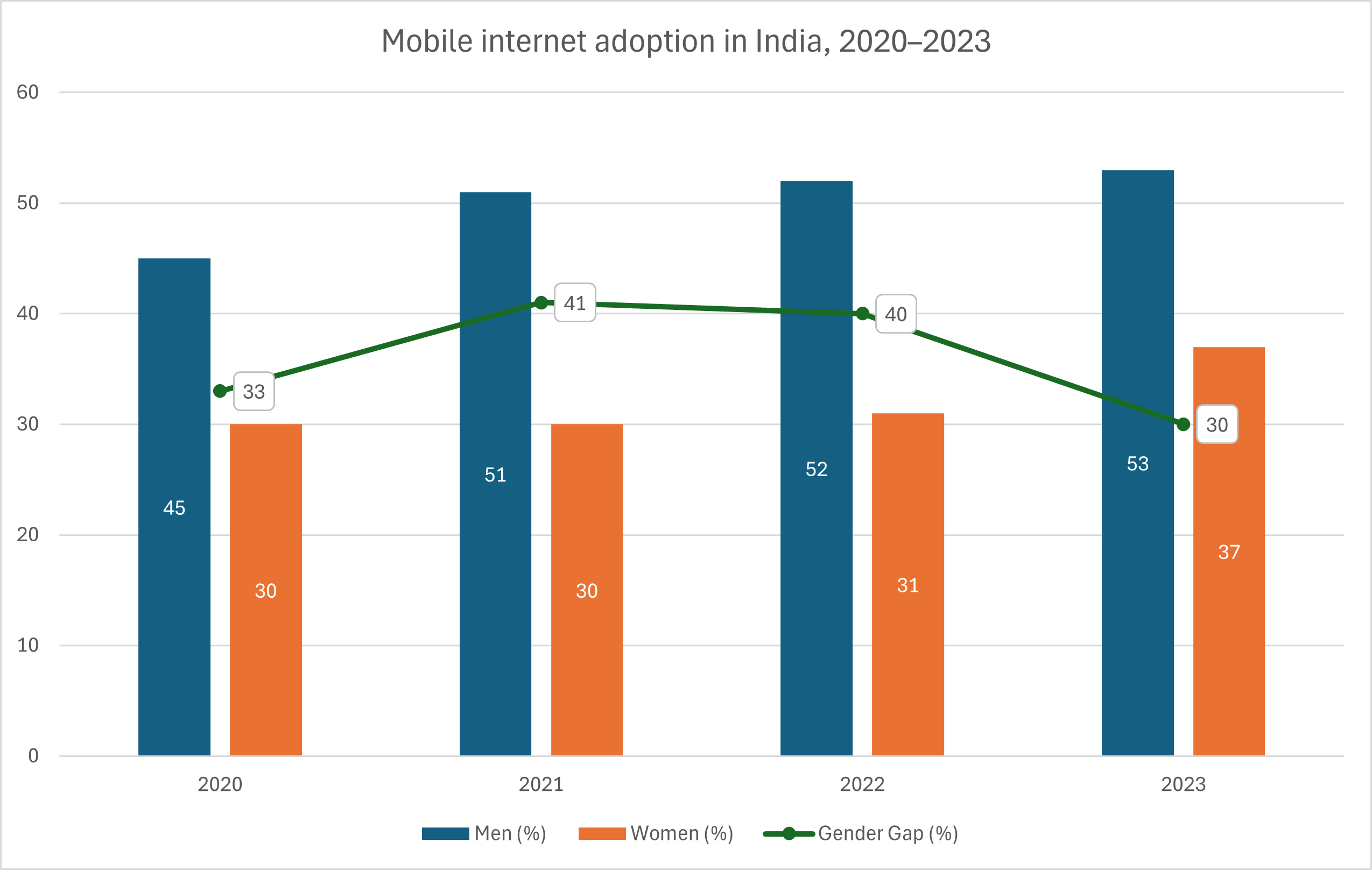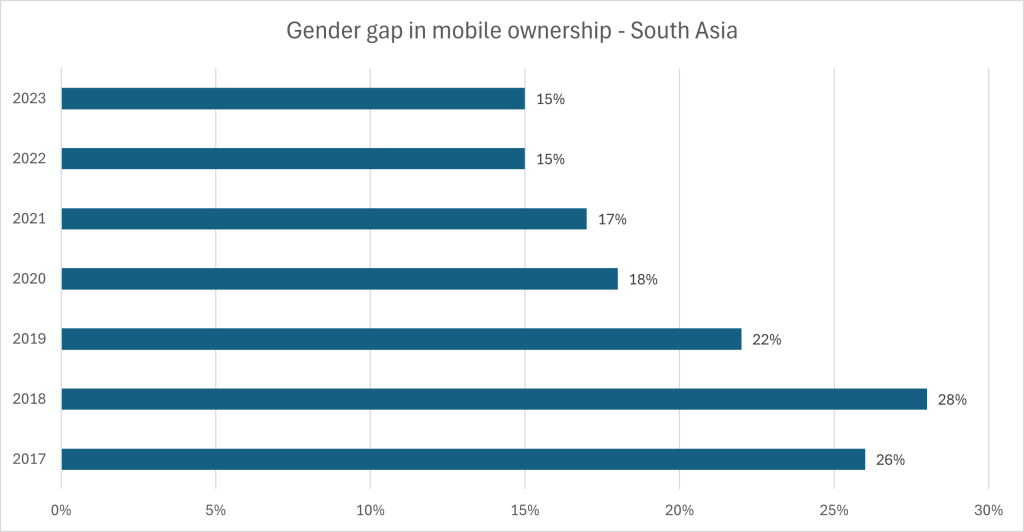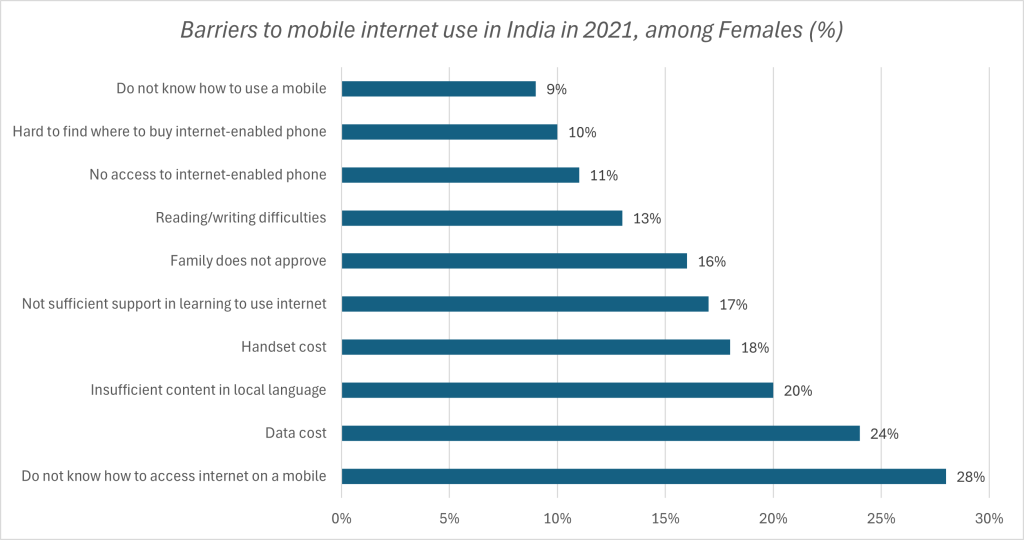
31 Jul Is the Digital World Leaving Women Behind? A Deep Dive into South Asia’s Mobile Gender Gap
In a world increasingly driven by technology, access to mobile phones and the internet is no longer a luxury; it’s a lifeline. From online banking to health services, education, and job opportunities, digital inclusion is critical to achieving gender equity. Yet, in South Asia, a region with a large population, women remain startlingly absent from the digital conversation. The digital divide, particularly in mobile phone ownership and internet use, continues to reinforce long-standing gender inequalities, effectively leaving millions of women behind.
Leaving women behind in the digital revolution isn’t just a moral failing; it’s an economic one. GSMA estimates that closing the gender gap in mobile internet use across low- and middle-income countries could deliver an additional $700 billion in GDP growth over the next five years. In South Asia, digital inclusion could be transformative, empowering women with access to job markets, education, healthcare, and entrepreneurship opportunities. Digital tools have the potential to redefine how women participate in public life, how they learn, earn, and grow. But without intentional policies and grassroots efforts, the gender gap will persist, reinforcing a cycle of exclusion.
The Global Status of Menstrual Health Awareness in Schools
Globally, menstrual health education remains inadequate. According to UNICEF, on any given day, more than 300 million women worldwide are menstruating and in total, an estimated 500 million lack access to menstrual products and adequate facilities for menstrual hygiene management (MHM), which includes the knowledge, products, and facilities to manage their periods safely and with dignity. In countries like Ethiopia and Bangladesh, fewer than half of girls know about menstruation before they experience it. Even in more developed countries, menstrual education is often delayed, incomplete, or treated as an awkward afterthought in biology classes.
In low- and middle-income countries (LMICs), the lack of education about menstruation is compounded by infrastructural and cultural barriers. Girls are often told to stay home during their periods. They use unhygienic materials, are shamed for bleeding, and often grow up believing menstruation is something dirty or wrong. According to a study titled “Menstrual Hygiene Preparedness Among Schools in India,” less than half of the girls were aware of menstruation before menarche, teachers were a less common source of information about menstruation to girls, and separate toilets for girls were present in around half of the schools. This reflects a gap in the education system and infrastructure to educate young girls about menstruation.
A Region of Sharp Contrasts
South Asia is home to over 1.8 billion people and some of the fastest-growing mobile markets globally. But behind the impressive growth figures lies a stark gender disparity. According to a recent study from 2024, women in South Asia are 31% less likely to use mobile internet than men, the highest regional gender gap in the world. This represents a slight improvement from 41% in 2022, but the progress is far from equitable or fast enough.
In fact, the gap has been remarkably persistent. In 2020, the mobile internet gender gap in South Asia stood at 50%, improving to 42% in 2021, 41% in 2022, and 39% in 2023. While these percentages suggest movement in the right direction, the rate of change is insufficient when millions of women still lack basic access to a mobile device, let alone internet connectivity.

Source: GSMA Consumer Survey, 2020-2023
The Basics Still Out of Reach
Mobile phone ownership, the first step towards digital inclusion, continues to be male dominated. In 2024, women in South Asia were 15% less likely than men to own a mobile phone. While ownership has increased among women in countries like India and Bangladesh over the past few years, the gender gap remains significant both in urban and especially in rural settings. In some rural areas, cultural norms, safety concerns, and affordability prevent women from owning a phone altogether. In extreme cases, the use of phones by women is actively discouraged. This disparity has real-world consequences. Without a phone, women can’t access emergency services, digital payments, e-learning platforms, or even basic communication tools that many take for granted.

Source: GSMA, 2023
Barriers to Access: Awareness and Affordability Remain the Biggest Hurdles
The gendered digital divide in South Asia, particularly in countries like India, is deeply rooted in barriers that go beyond infrastructure. According to a 2022 Statista survey, women cite a lack of awareness and affordability as primary reasons for not using mobile internet. 24% of women identified “not knowing how to use the internet” as a key barrier. Similarly, 21% of women cited the high cost of handsets as a hurdle. The same trend continues with data costs, 19% of women found mobile internet too expensive. These figures reveal a troubling pattern: while mobile internet infrastructure may be expanding, women are disproportionately excluded from its benefits simply because they cannot afford it or have never been taught how to use it. This reinforces the reality that the core challenge is not just availability, but access, and access is deeply gendered.

Source : Statista 2025
These barriers are further compounded by restrictive social norms and safety concerns. In many South Asian communities, women are discouraged from owning or using mobile phones due to fears around moral policing, harassment, or surveillance. Families withhold digital access from daughters and wives under the pretext of protection, limiting their independence and opportunities. Even when a device is available in the household, it is often controlled by male family members, and women’s usage is monitored or restricted. As a result, the digital gap is not simply a reflection of economic inequality; it is a mirror to deeper issues of autonomy, mobility, and gender roles. Bridging this gap requires more than technological solutions; it demands cultural change, digital literacy education tailored for women, and policy interventions that center gender equity in the digital age.
Bridging the Gap
Governments, telecom providers, NGOs, and community leaders must work to close the mobile gender gap. Initiatives that reduce the cost of smartphones, increase digital literacy among women, and challenge social norms around mobile use can go a long way. Programs like India’s Digital Beti and Bangladesh’s Smart Women, Smart Economy are steps in the right direction but scaling and sustaining such interventions are critical. Here are some impactful initiatives from South Asia that have contributed to bridge the digital divide.
- India’s Digital Beti
Digital Beti is a government-backed initiative aimed at empowering rural women by providing affordable smartphones along with comprehensive digital literacy training. The program focuses on building women’s confidence and skills to navigate mobile internet, digital payments, and online services safely. As a result, it has increased mobile internet adoption among participants, helping to close the digital skills and awareness gap that prevents many women from fully participating in the digital economy. By involving families and local communities, it also helped challenge social norms that restrict women’s phone usage. - Bangladesh’s Smart Women, Smart Economy
This campaign addresses affordability and digital literacy barriers by offering subsidies for low-cost smartphones and tailored training on mobile financial services for women. Since its launch, the initiative has contributed to reducing the mobile internet gender gap in Bangladesh. It has successfully increased women’s access to mobile banking, e-commerce, and government services, helping women overcome financial exclusion and lack of digital skills that previously limited their economic participation. - Pakistan’s Internet Dost
Internet Dost is a grassroots program targeting rural women with smartphones preloaded with educational and health content. It emphasizes peer learning through community groups to enhance digital literacy and build trust in technology. This initiative effectively addresses social and cultural barriers by creating supportive environments for women to learn and use digital tools, which otherwise would have remained inaccessible due to traditional gender norms and limited education. - Nepal’s DigitALL Nepal
DigitALL Nepal, a joint effort by the World Bank and the Nepalese government, focuses on increasing women’s digital access in remote areas by providing affordable devices, data plans, and digital skills workshops. The program has led to a significant rise in women participating in online markets and accessing financial services, boosting their economic independence. It fills critical gaps in both physical access to technology and digital literacy, while also addressing social stigma around women’s mobile phone use by involving communities in awareness campaigns.
South Asia is at a crossroads. As the region surges forward with technological innovation and digital growth, it must ensure that its women are not left on the sidelines. Bridging the mobile gender gap isn’t merely about distributing devices; it’s about reshaping power, access, and opportunity. In the digital world, inclusion is not just connectivity; it’s equality.
Blog by Shreya Ghimire,
Research Analyst, Frost & Sullivan Institute
